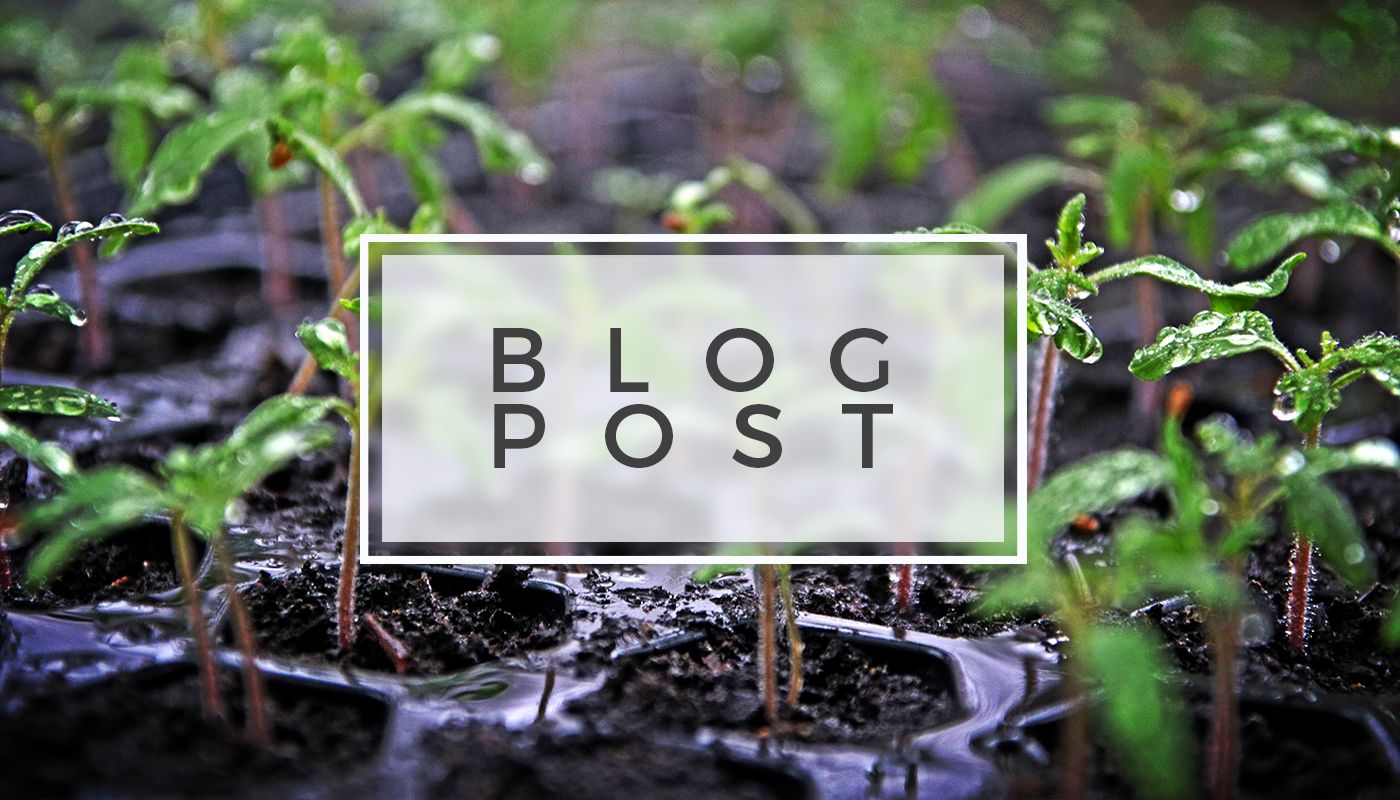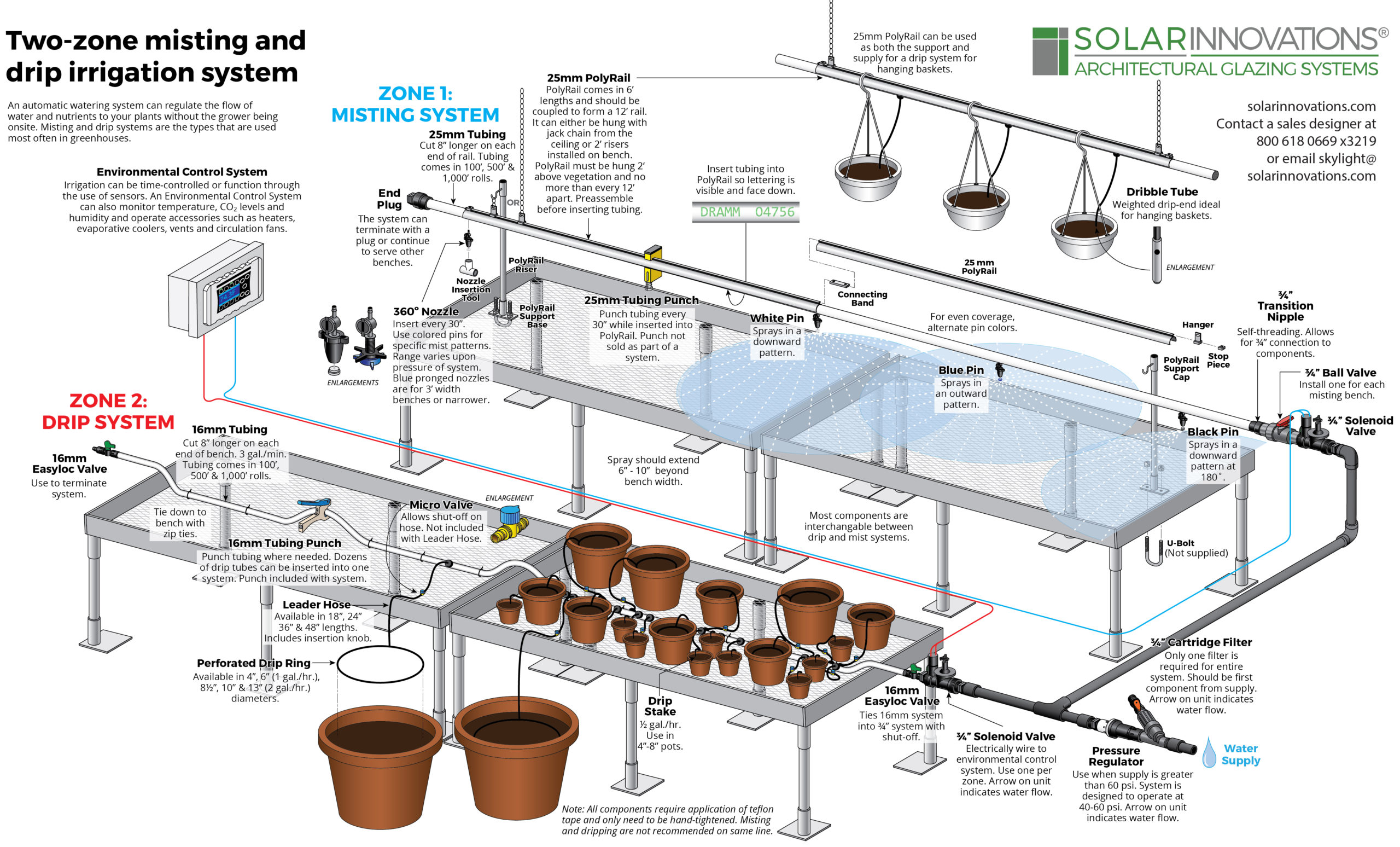

Greenhouse Irrigation Overview
When planning the construction of a greenhouse on your property, one of the most important considerations to make is proper irrigation. While you could use a watering can for each plant, there are systems available that will make that job easier and supply your plants with an even disbursement of water, even without human intervention, making the development of your greenhouse far more calculated. While planning your greenhouse, you will need a water supply and a drain, so excessive water will not collect on the floor, causing a slipping hazard. Solar Innovations implements two distinctive irrigation systems – Drip irrigation and Misting irrigation:
Misting Irrigation
A misting irrigation system simulates rainfall, watering the entire plant gently and evenly. A main line is mounted above each bench and nozzles are inserted along the line to spray a downward pattern of water. The line can either be mounted directly to the bench with a riser or hung from the ceiling and requires higher water pressure than drip irrigation. Because misting systems deliver a greater quantity of water than drip systems, they operate at shorter intervals of time.
Drip Irrigation
A drip irrigation system is designed to provide water to the plants root system only. The water pressure needed for this system is much less than a misting system, as the water is delivered at a much slower rate at a longer duration. There is generally a main supply line that runs the length of each bench with feeder tubes that are tapped out of that line, serving individually potted plants.
There are many additional considerations involved in both drip and misting irrigation, many of which we will dissect further in future blogs.

A greenhouse can be designed to accommodate either system with multiple benches, hundreds of plants, and zones to hydrate at differing levels. Additionally, a hybrid system can be setup for both drip and misting irrigation, all from the same supply line. To keep your system free of debris, which can clog nozzles and drippers, it is recommended that an inline filter be installed at the first point of contact of the supply, followed by a shutoff valve so the whole system can be turned off easily. An inline pressure regulator can be installed to reduce excessive water pressure, which is particularly helpful with drip irrigation systems.
To divide your system between benches, irrigation types, or zones, a series of “tees” need to be incorporated in the water line, which can either be built with PVC pipe or flexible polyethylene tubing with twist-on connectors. Each new line created from the “tees” should have its own shutoff valve to allow for manual control of each branch of the system. If you are incorporating an automatic control unit, such as an Environmental Control System, it is at this point that electric valves, called solenoids, be installed on each branch to turn the water on/off, creating a “set it and forget it” system. Environmental Control Systems will also be outlined in further detail in future blogs.
For rolling benches, it is recommended that flexible hose, much like a garden hose, be used for each bench, or between adjacently connected benches, to maximize mobility.
For more information on greenhouses, greenhouse accessories, or any other Solar Innovations® products, please contact Solar Innovations® directly at [email protected] or call 800 618 0669.

